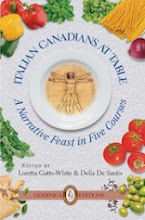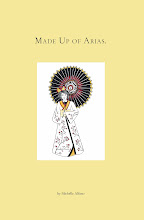 The Red Leather Diary: Reclaiming a Life Through the Pages of a Lost Journal by Lily Koppel (HarperCollins, 2008) 321 pages
The Red Leather Diary: Reclaiming a Life Through the Pages of a Lost Journal by Lily Koppel (HarperCollins, 2008) 321 pagesA fairy tale set in New York is my favourite kind of fairy tale.
Intrigued by my husband R's description of this book, I asked him to pick it up for me. A New York Times writer, Lily Koppel, was astonished to find a mountain of suitcases in a red dumpster outside her apartment building at 98 Riverside Drive in New York. The luggage had been stored until October 2003 in the basement where Koppel lived. Unclaimed baggage was being discarded.
Among these things she found a number of treasures: beautiful articles of clothing, flapper dresses, a coat from Bergdorf's, matchboxes from the El Morocco nightclub and other wonderful mementos from the 20s and 30s. She was further pleased to receive a crumbling red leather diary from the building's doorman Hector which he had rescued from the discarded suitcases.
After some investigative work, Lily finds the writer of the diary, Florence Wolfson, who had begun the journal at the age of fourteen in 1929, writing in it faithfully each day for five years until 1934. An exceptionally bright and articulate girl, interested in art, theatre and literature, she impresses Lily with her passion, knowledge and openness. Lily later said it felt as if the entries were like letters written to her personally.
As one reviewer said, Florence Wolfson was Marjorie Morningstar before the writer Herman Wouk (b. 1915) had ever conceived the character of Marjorie Morningstar. If you read the plot of novel and The Red Leather Diary, you might see how Florence's life mirrored the main character's life a little. Having read this book and seen the film now (review to come), I now think that the similarities are superficial but probably worth noting.
This is a remarkable story and, sadly at times, I find the story much more interesting than Koppel's writing. Koppel is young, in her late twenties now, and the book is riddled with cliches or silly metaphors ("slaving over a stove", "shaken [upset] like a martini", etc ...) which seems as if the book was written quickly and not carefully edited.
Oddly, too, she gives these cryptic descriptions which are never expanded: speaking of John Berryman's "overbearing" mother and somehow linking this to his emotional instability and eventual suicide - how so? Florence's former agent is to get "violent over writing" - what does that mean? Over Florence's writing, over writing in general? Violent how?
But what salvages the book for me is the remarkable journey of this real woman Florence Wolfson. The diary and Koppel's imagined explanation of what transpires between the lines of the diary held me.
When Lily finds Florence through a private investigator she is living in Florida and Connecticut and is in her 90s; she had married Nat Howitt, a childhood sweetheart whom she had met at the age of 13 and married at 23. But there were many beaus and many adventures before her marriage to Nat Howitt ...
Florence, as a teenager, falls in love with the avant-garde Broadway theatre actress Eva La Gallienne, a formidable, openly lesbian thespian who has only Platonic feelings for the smitten girl. Florence was attracted to both boys and girls and unrepentantly slept with both which she chronicled in her diary.
She had tea at Schrafft’s and frequented the El Morocco night club; she window shopped at Bonwit Teller and Bergdorf’s, and rode horses in Central Park at the Clarington Riding Academy. At Hunter College she provocatively wore her riding breeches, openly flouting school rules, and served as the editor of the college's literary magazine Echo. Her classmates included Belle Kaufman, author of Up the Down Staircase; Pearl Siegelstein, a future playwright; and Joy Davidman, the future wife of C.S. Lewis. She held a literary salon at the age of nineteen which the poets Delmore Schwartz and John Berryman attended. Her school friend Gertrude Buckman eventually married Schwartz.
When Florence graduated, she went to Europe alone and traveled through England, France and Italy. She had an affair with Filippo, an Italian "count" (a fake it turns out but he was an aviator, poet, and painter) whose glamorous photos, as well as many others, adorn the book.
But as the daughter of Russian Jewish immigrants, Florence eventually succumbs both to her passion for Nat and her parents' wishes to lead a more conventional life. She elopes with Nat and Nat becomes an oral surgeon; they settle in Connecticut. They raise two daughters and spawn many grandchildren and great-grand children. Her life while interesting (writing magazine articles for national publications, buying a hotel with her husband, successfully playing the stock market) never fulfills her deepest artistic longings.
A trip to Italy in her forties, alone, unleashes intense feelings of "love, sadness, nostalgia, yearning and beauty" which prove unsettling. When she returns to New York a psychoanalyst sternly advises her that her goal in life is to be a wife and mother - an admonition that she takes to heart for the majority of her long life. Florence has now outlived all those mentioned in her diary as Koppel carefully notes at the end.
But there is a price for independence ... when Florence re-encounters childhood friend Gertrude Buckman (the former wife of the poet Delmore Schwartz) in their old age she notes with horror how poorly Gertrude is doing, alone, penniless and living in impoverished circumstances. The comparison irks even more when she compares the affluence of her own life which followed a safe and financially secure path.
Then Lily finds Florence in 2006 and she becomes the focus of a great deal of media attention and interest in her early nineties. I watched a clip of Wolfson and Koppel on the Today Show and Kathie Lee Gifford (in her usual loud hyperbolic style) said, "Before Angelina Jolie there was Florence". Well, not quite, not even close, but she was an unusually strong-willed, extraordinary girl in an extraordinary time in New York. And her journey was well worth reading about.










No comments:
Post a Comment